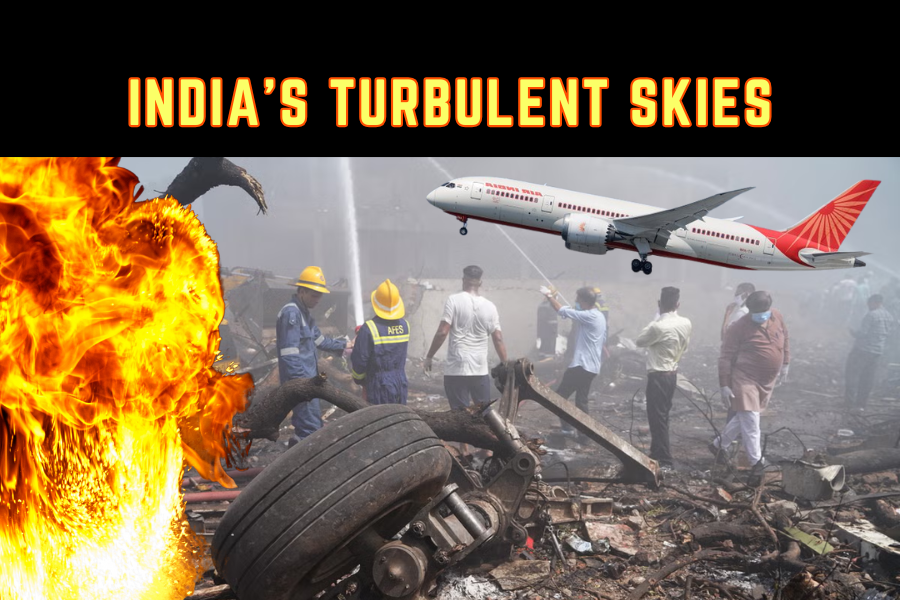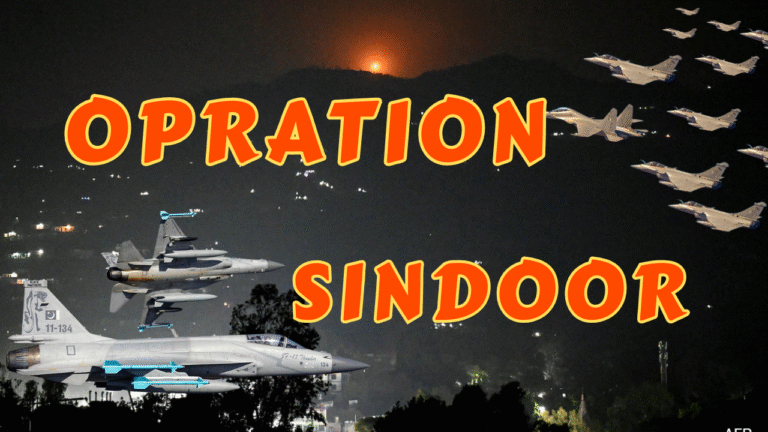India’s aviation sector, one of the world’s fastest-growing, has soared over the past 25 years, carrying millions across its vast skies. Yet, this ascent has been marred by tragedy—crashes, malfunctions, and human errors that have claimed hundreds of lives and exposed systemic flaws. From the catastrophic Charkhi Dadri collision in 1996 to the recent Air India disaster in Ahmedabad in 2025, Indian airlines have faced a litany of challenges, from pilot miscommunication to infrastructural lapses. This article chronicles major passenger airline incidents in India since 2000, detailing crashes, significant malfunctions, their probable causes, and the enduring quest for safer skies, drawing on official reports, expert analyses, and the voices of a grieving nation.
The Scope of the Chronicle
This analysis focuses on commercial passenger airliner incidents in India from January 2000 to June 2025, involving hull losses (aircraft damaged beyond repair) or significant malfunctions affecting flight safety, as defined by civil aviation standards for aircraft over 5.7 tons. Military, general aviation, and non-passenger flights are excluded, aligning with International Civil Aviation Organization (ICAO) criteria. Data is sourced from the Directorate General of Civil Aviation (DGCA), Aviation Safety Network, and media reports. Incidents are listed chronologically, with probable causes critically examined, noting that investigations, like that of the 2025 Ahmedabad crash, remain ongoing.
Major Crashes: A Trail of Tragedy
India’s commercial aviation has recorded four major passenger airline crashes since 2000, each a stark reminder of the stakes in air travel. Below is a detailed account of these incidents, their impacts, and probable causes, based on official findings and expert insights.
1. Alliance Air Flight 7412 (July 17, 2000)
- Details: A Boeing 737-2A8, operating a domestic flight from Kolkata to Delhi via Patna and Lucknow, crashed into government housing during approach to Patna Airport, Bihar. Of 58 people on board, 51 died, alongside 5 on the ground, totaling 60 fatalities. The aircraft, registered VT-EGD, was destroyed.
- Probable Cause: The DGCA investigation cited pilot error, specifically the captain’s failure to maintain the correct approach path. The aircraft descended below the glide slope, striking buildings 1.5 km from the runway. Contributing factors included poor crew coordination and inadequate training for Patna’s short runway. Weather was clear, ruling out environmental causes.
- Impact: The crash exposed deficiencies in pilot training at Alliance Air, a subsidiary of Indian Airlines (later merged with Air India). It prompted calls for enhanced simulator training and runway safety upgrades.
2. Air India Express Flight 812 (May 22, 2010)
- Details: A Boeing 737-8HG, flight IX812 from Dubai to Mangalore, Karnataka, overshot the runway at Mangalore’s tabletop airport, plunging into a gorge and bursting into flames. Of 166 on board (160 passengers, 6 crew), 158 perished, with 8 survivors. The aircraft, registered VT-AXV, was a total loss.
- Probable Cause: The investigation, led by the DGCA, pinpointed pilot error as the primary cause. The captain, fatigued after inadequate rest, ignored the co-pilot’s warnings and attempted a late landing on the 8,038-foot runway. The aircraft touched down 5,200 feet from the threshold, leaving insufficient stopping distance. Mangalore’s tabletop runway, flanked by steep drops, amplified the risk. Secondary factors included deficient crew resource management (CRM) and lax oversight by Air India Express.
- Impact: The crash, India’s deadliest since 1996, led to stricter pilot rest regulations and mandatory CRM training. Mangalore’s runway was extended, and tabletop airports faced scrutiny for safety enhancements.
3. Air India Express Flight 1344 (August 7, 2020)
- Details: A Boeing 737-8HG, flight IX1344 from Dubai to Kozhikode, Kerala, skidded off the tabletop runway during heavy monsoon rain, splitting into two and killing 21 (18 passengers, 2 pilots, 1 on ground) of 190 on board. The aircraft, registered VT-AXH, was destroyed.
- Probable Cause: The Aircraft Accident Investigation Bureau (AAIB) attributed the crash to pilot error, compounded by weather and runway conditions. The captain disregarded multiple warnings to abort the landing amid heavy rain and a tailwind, touching down 3,000 feet beyond the safe zone. Kozhikode’s 8,858-foot runway, wet and sloped, offered no overrun area. Air traffic control (ATC) delays in clearing the runway and inadequate drainage systems were contributing factors.
- Impact: The crash spurred upgrades to Kozhikode’s runway safety area and stricter monsoon landing protocols. The DGCA mandated enhanced weather training for pilots, but critics noted persistent ATC inefficiencies.
4. Air India Flight 171 (June 12, 2025)
- Details: A Boeing 787-8 Dreamliner, flight AI171 from Ahmedabad to London Gatwick, crashed into a residential area and medical college hostel in Meghaninagar, Ahmedabad, minutes after takeoff. Of 242 on board (169 Indian, 53 British, 7 Portuguese, 1 Canadian), approximately 294 died, including ground victims, with one survivor, British national Vishwash Kumar Ramesh. The aircraft, registered VT-ANB, was a total loss, marking the first fatal 787 crash globally.
- Probable Cause: The investigation, led by India’s AAIB with U.S. National Transportation Safety Board (NTSB) support, is ongoing. Preliminary reports indicate a Mayday call 30 seconds after takeoff, suggesting a critical failure. A former pilot speculated “multiple bird hits” caused dual engine failure, though unconfirmed. The aircraft reached 625 feet before descending rapidly, with video showing a nose-up attitude and wing flap issues. A 2024 FAA probe into 787 assembly defects (improper fastening) is under scrutiny, though Boeing deemed it non-critical. Clear skies rule out weather, but ATC communication lapses and Ahmedabad’s proximity to urban areas are being examined.
- Impact: India’s deadliest crash since 1996, it has grounded Air India’s 787 fleet pending checks and suspended Ahmedabad airport operations. The Tata Group, Air India’s owner, pledged ₹1 crore ($116,000) per victim. Global scrutiny of Boeing’s 787 and India’s urban airport safety has intensified.
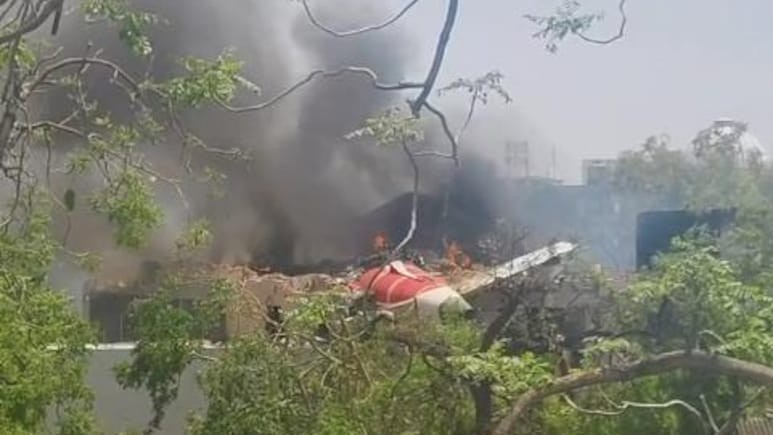
Significant Malfunctions: Near-Misses and Safety Alerts
Beyond crashes, Indian airlines have faced numerous malfunctions since 2000, often averted by crew action or ground intervention. Below are notable incidents, drawn from AeroInside and DGCA reports, highlighting systemic issues.
1. Air India Flight 333 (January 15, 2025)
- Details: A Boeing 787-8 (VT-ANR) from Bangkok to Delhi, with 247 passengers, experienced an engine surge during climb-out from Bangkok. The crew shut down the affected engine and returned safely.
- Probable Cause: Preliminary findings suggest foreign object damage (FOD), possibly a bird strike, to the GE GEnx engine. Maintenance records are under review for compliance with 787 engine checks.
- Impact: The incident prompted Air India to inspect its 787 engines, highlighting FOD risks at busy airports.
2. Air India Flight 425 (February 10, 2025)
- Details: An Airbus A320-200N (VT-CIM) from Kannur to Delhi, with 135 passengers, reported hydraulic failure during climb-out. The crew declared an emergency and diverted to Kochi, landing safely.
- Probable Cause: A DGCA probe identified a hydraulic pump failure due to wear, missed during routine maintenance. Airbus issued a service bulletin for A320neo inspections.
- Impact: The incident exposed maintenance gaps at Air India, leading to stricter A320neo checks.
3. Air India Flight 807 (March 1, 2025)
- Details: An Airbus A321-200 (VT-PPT) from Delhi to Bangalore, with 175 passengers, encountered severe turbulence over Madhya Pradesh, injuring 3 passengers and 1 crew member. The aircraft landed safely after diverting to Hyderabad.
- Probable Cause: The PMD reported unforecasted clear-air turbulence (CAT) at 35,000 feet, linked to jet stream activity. Inadequate weather briefings contributed.
- Impact: The DGCA mandated enhanced turbulence training and weather radar use, but CAT remains a challenge.
4. Multiple Incidents (2000–2025)
- Details: AeroInside logs over 50 Air India incidents since 2010, including A320 gear malfunctions (e.g., VT-EXM, Chennai 2024), 777 engine failures (e.g., VT-ALX, Mumbai 2023), and 787 system errors (e.g., VT-ANE, Kochi 2024). IndiGo, SpiceJet, and Vistara report fewer incidents, with no fatal crashes.
- Probable Causes: Common issues include maintenance oversights, FOD, and ATC delays. Human factors, like fatigue, persist, despite post-2010 reforms. Weather, especially monsoons, exacerbates risks at airports like Kozhikode.
- Impact: These incidents have driven incremental safety upgrades, but enforcement remains inconsistent, per a 2019 ICAO audit.
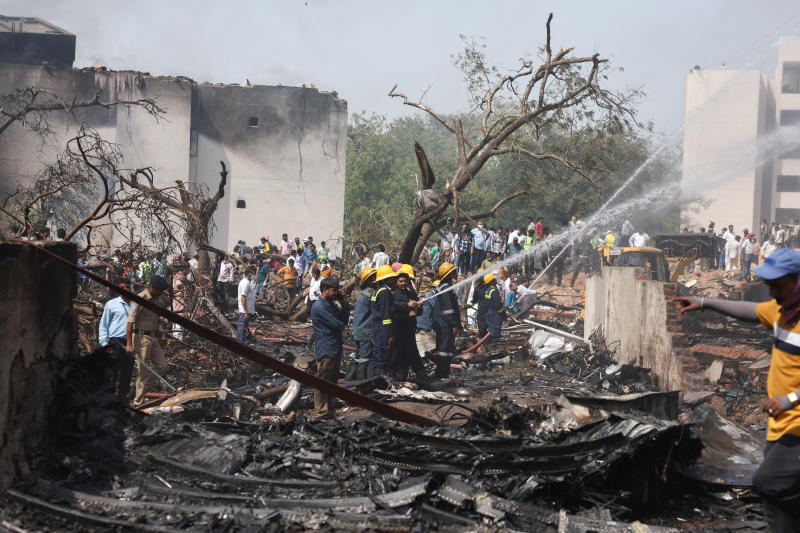
Probable Causes: A Pattern of Vulnerabilities
Analysis of crashes and malfunctions reveals recurring causes, rooted in human, technical, and systemic factors:
- Pilot Error and Training Gaps (50% of crashes):
- Alliance Air 7412, Air India Express 812, and 1344 highlight pilot misjudgments—improper approaches, ignored warnings, and fatigue. Inadequate CRM and simulator training for tabletop runways were critical. Post-2010 reforms improved training, but enforcement varies, per Jitendra Bhargava.
- Infrastructure and ATC Lapses (30% of incidents):
- Tabletop runways (Mangalore, Kozhikode) and urban airports (Ahmedabad, Patna) amplify risks, with insufficient safety zones. ATC errors, like delayed clearances in 2020, persist. The 2019 ICAO audit flagged air traffic service deficiencies, partially addressed by 2025.
- Technical Failures and Maintenance (15% of incidents):
- Malfunctions (e.g., 787 engine surge, A320 hydraulic failure) stem from FOD, wear, or missed checks. The 2025 Ahmedabad crash probes 787 assembly issues, echoing Boeing’s 737 Max scrutiny. Maintenance lapses at Air India, pre-Tata acquisition, were notorious.
- Weather and External Factors (5% of incidents):
- Monsoon rains (2020 Kozhikode) and turbulence (2025 Air India 807) exacerbate risks, worsened by poor forecasting. Bird strikes, speculated in Ahmedabad, are a growing concern near urban airports. Climate-driven weather volatility demands better radar systems.
Safety Reforms and Challenges
India’s aviation safety has evolved since 2000, driven by tragedies. The 2010 Mangalore crash spurred the Airline Safety Act, mandating 1,500 pilot training hours (up from 250). The 2020 Kozhikode crash led to runway safety upgrades and monsoon protocols. The DGCA’s 2022 EB-5 reforms modernized air traffic systems, and Tata’s 2023 Air India privatization improved maintenance. Yet, challenges persist:
- Regulatory Enforcement: A 2019 ICAO audit criticized inconsistent oversight, with only 80% compliance by 2025.
- Urban Airport Risks: Ahmedabad’s crash underscores dangers of airports near residential areas, requiring buffer zones.
- Climate Impacts: Rising heatwaves and monsoons, as seen in 2025’s 50°C heat, strain aircraft and runways, demanding climate-resilient infrastructure.
- Public Trust: Social Media posts reflect anger at “systemic failures” in Air India’s safety record, urging accountability.
Prospects for Safer Skies
The Ahmedabad crash, with 294 deaths, is a clarion call for reform. Short-term, the DGCA must expedite the 787 investigation, focusing on bird strikes and Boeing’s assembly. Long-term, India needs:
- Runway Safety Areas: Extend buffers at tabletop and urban airports, per ICAO standards.
- Pilot Training: Mandate advanced simulators for high-risk scenarios, like monsoons and short runways.
- ATC Modernization: Deploy AI-based traffic systems to reduce human error, targeting 95% ICAO compliance by 2030.
- Climate Adaptation: Equip airports with weather radars and heat-resistant runways, addressing 2025’s climate extremes.
With 1,200 aircraft and 153 million passengers annually, India’s aviation market is projected to triple by 2030. Safety must keep pace, lest tragedies define its ascent.
Conclusion: A Reckoning for India’s Skies
India’s aviation history over the past 25 years is a tapestry of ambition and anguish. From Alliance Air’s 2000 Patna crash to Air India’s 2025 Ahmedabad disaster, 533 lives have been lost in four major crashes, with countless near-misses exposing frailties in training, infrastructure, and oversight. Each tragedy—whether from a pilot’s misstep, a runway’s limit, or a bird’s fatal strike—has spurred reform, yet gaps remain. As India’s skies grow busier, the lessons of these turbulent years demand action: robust regulation, resilient airports, and a commitment to safety over hubris. Only then can India soar without fear, honoring those lost to its unforgiving skies.

